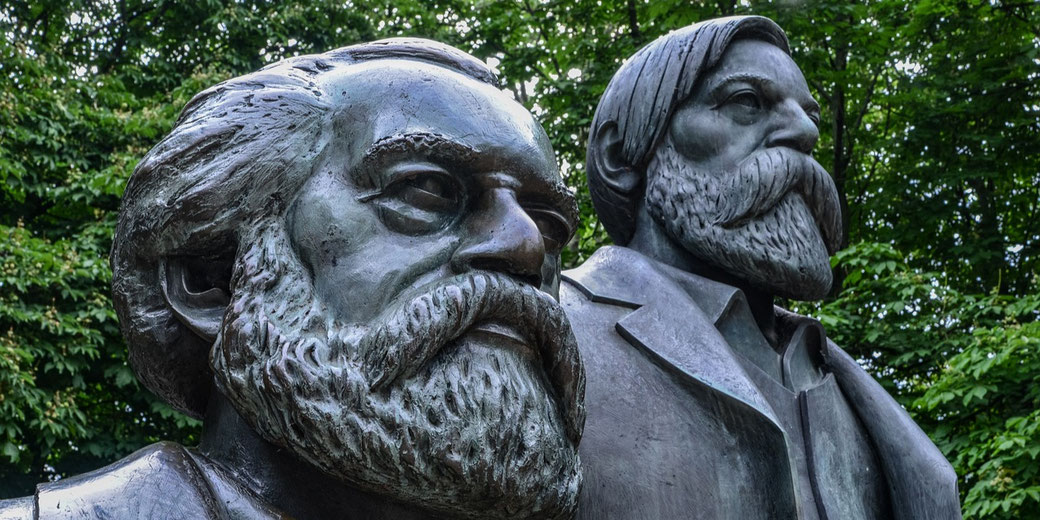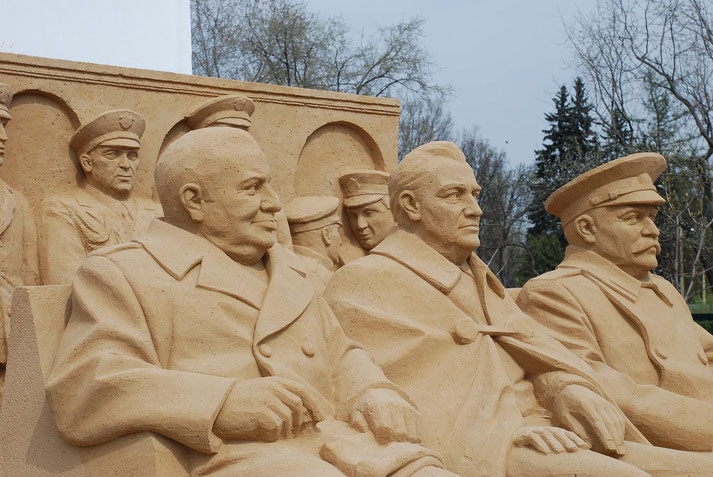What caused the Cold War?

In the aftermath of World War II, the world was divided between two superpowers: the United States and the Soviet Union. This division led to a Cold War that would last for over four decades.
It was at the wartime conferences in Yalta and Potsdam that the leaders of these nations attempted to construct a peaceful post-war world – but this was thwarted by competing interests, mistrust, and broken promises.
Below, we will take a closer look at these events and explore the origins of the Cold War.
The Nazi-Soviet Pact
The first events that set the stage for the Cold War actually took place before WWII had even begun.
In 1939, the Soviet Union and Nazi Germany signed a non-aggression pact, known as the Molotov-Ribbentrop Pact, which effectively divided Eastern Europe into spheres of influence between the two powers.
As a result, the Nazis were able to focus their aggression on France, while the Soviets could expand their sphere of influence into Eastern Europe without immediate conflict with Germany.
Western observers considered Stalin and Hitler to be similar because of their totalitarian regimes and aggressive expansionism.
However, the two leaders had very different motivations for signing the pact.
Stalin was primarily interested in gaining time to build up his military strength, while Hitler wanted to avoid a two-front war.
Hitler betrays Stalin
However, this pact would come back to haunt the Soviets later, as Hitler eventually betrayed Stalin.
In June 1941, Nazi Germany launched Operation Barbarossa – a massive invasion of the Soviet Union.
In the first few weeks, the Germans were able to make rapid advances, capturing vast areas of territory and inflicting heavy casualties on the Soviet forces.
However, the Red Army eventually began to fight back, and by 1943 they had pushed the Germans back.
The turning point in the war against Germany was the Battle of Stalingrad, which took place in 1942-43.
At the end of this battle, the Germans were decisively defeated by the Soviets, suffering over a million casualties and losing almost their entire Sixth Army.
Other important battles, such as the Battle of Kursk in 1943, further contributed to the Soviet Union's momentum on the Eastern Front.

The Yalta Conference
As Nazi Germany started to collapse in early 1945 and the Allies were closing in on Berlin, victory in the war seemed assured.
So, in February of that year, the leaders of the United States, the Soviet Union, and Great Britain (Franklin Roosevelt, Joseph Stalin, and Winston Churchill, respectively) met for a conference in Yalta to determine the best strategy for bringing the conflict to an end.
As part of these discussions, the Soviets agreed to enter the war against Japan, while the Americans promised to provide additional aid to the Soviet Union.
However, it became clear during the conference that Churchill was cautious of Stalin and communism in general.
Winston Churchill viewed the wartime alliance with Stalin as a "necessary evil" to achieve the common goal of defeating Nazi Germany.
Franklin Roosevelt, on the other hand, was more optimistic about Soviet intentions and saw Stalin as a potential ally in the fight against fascism.
As a result of the negotiations at Yalta, Stalin gained influence over much of Eastern Europe, while the United States and Great Britain supported the reconstruction of democratic governments in Western Europe.
One of the most important discussions at Yalta was about the future of Poland.
Roosevelt and Churchill both expressed a desire that Poland should have open and fair democratic elections. Stalin said he would support this.
However, after the war, Stalin reneged on this promise and installed a communist government in Poland.
In March 1945, he ordered the arrest of Polish politicians, who had been working with the Americans and British.
Stalin also delayed the elections in Poland until January 1947, at which time he was able to manipulate the outcome.
The Potsdam Conference
After the Yalta Conference, the war continued to swing in the Allied favour and it was decided to hold another meeting.
In July to August of 1945, just after the end of the war in Europe, the leaders met at Potsdam.
By this time, President Roosevelt had died, and the new US leader, Harry Truman, met with Stalin and Churchill.
During the conference, Churchill was also suddenly replaced as the leader of the UK by Clement Attlee, who had defeated him in the most recent elections.
This time, the main topic of discussion was how to deal with the defeated Nazi Germany.
The Allies agreed that it should be divided into four zones, each controlled by one of the major powers: United States, the United Kingdom, France, and the Soviet Union.
Curiously, the capital city of Berlin would also be divided into four sectors, with one each controlled by the same four countries.
The conference became noted for the increasing tensions between Stalin and Truman.
Truman was not as trusting of Stalin as Roosevelt had been, and he was concerned about the Soviet Union's increasing influence over Eastern Europe.
This would lead to further mistrust and divisions between East and West in the years to come.
It was also decided that the victorious countries could take reparations from the defeated Germany.
Specifically, it was agreed that the Soviet Union could take a percentage of Germany's industrial equipment and other resources from its zone of occupation.
This would further add to the economic divide between East and West.
However, the conference also failed to bring about a resolution on the issue of Poland.
Stalin continued to refuse to allow open and free elections in Poland. As a result, Truman decided not to give the Soviet Union any further aid.
The Cold War begins
So, by late 1945, a growing atmosphere of tension and mistrust was growing between America and Soviet Russia.
This gave birth to the term "Cold War", which was popularized by Bernard Baruch and later by journalist Walter Lippmann.
It is used to describe the period of tension between the Soviet Union and the United States that began in the aftermath of World War II.
It is so called because it was a time when the two superpowers were in competition with each other, but they never fought a direct war.
At its core, the Cold War can be seen as a struggle between capitalism and communism.
The United States, along with its allies, represented capitalism and democracy, which wanted a future Europe to be open and free.
The Soviet Union, along with its allies, represented communism, which wanted a future Europe to be under the influence of the Soviet Union.
Ultimately, the Cold War would last for more than four decades and would lead to the development of new weapons systems, such as nuclear missiles.
During this time, there would be great insecurity and fear, as both sides constantly worried about the other's intentions.
What do you need help with?
Download ready-to-use digital learning resources
Copyright © History Skills 2014-2025.
Contact via email
With the exception of links to external sites, some historical sources and extracts from specific publications, all content on this website is copyrighted by History Skills. This content may not be copied, republished or redistributed without written permission from the website creator. Please use the Contact page to obtain relevant permission.





